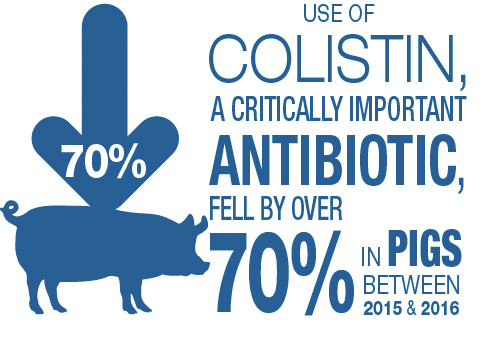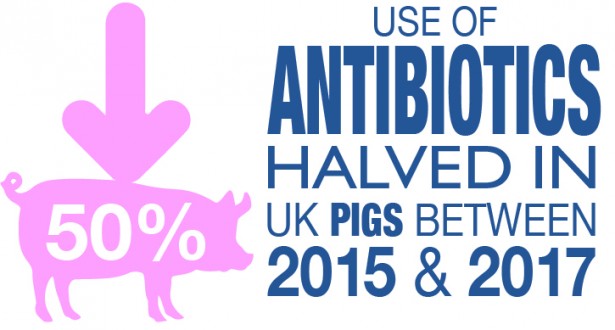RUMA has released a half-year summary of the UK farming industry’s progress towards achieving 2020 targets for antibiotic use in each of eight different livestock sectors.
The targets, developed last year by the Targets Task Force and published in October 2017, include a number of numerical and qualitative goals towards reducing, refining or replacing antibiotic use in UK farm animals.
The half-year summary can be downloaded here from the RUMA website www.ruma.org.uk
For pigs, the summary highlights:
- The UK pig sector announced a further 28% reduction in antibiotic use for 2017, reaching 131mg/PCU
- This means it has now halved its use in two years and is on track to reach 99mg/PCU by 2020
- Colistin use was also recorded at 0.01mg/PCU for 2017, a hundredth of the EU recommended maximum
- The pig e-Medicine Book (eMB) recorded approximately 90% of the national pig herd’s usage data online in 2017
- A benchmarking function has been added to e-MB to help pig farmers compare their antibiotic use against similar farm types.
 RUMA’s secretary general Chris Lloyd said a comprehensive review of progress was due in November. “In the meantime this four-page summary provides a flavour of some of the activities being implemented to build on the successful reduction of 27% in overall farm antibiotic sales 2014-2016.”
RUMA’s secretary general Chris Lloyd said a comprehensive review of progress was due in November. “In the meantime this four-page summary provides a flavour of some of the activities being implemented to build on the successful reduction of 27% in overall farm antibiotic sales 2014-2016.”
He said it was important to note each sector was very different – in terms of when they were first able to engage with the issue, disease pressure, number of producers and structure.
“This is why some have already made significant changes and are ‘refining’ how and when antibiotics are used, while others are working on bigger issues of data, communication and usage ‘hotspots’,” said Mr Lloyd.
“But whatever the stage, all remain fully engaged on driving improvement and best practice to ensure the targets can be achieved by 2020.”




